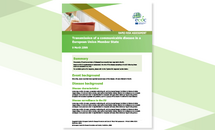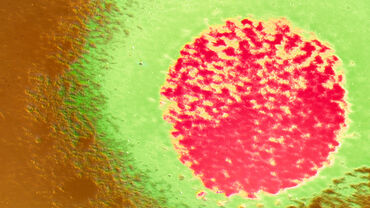Rapid risk assessment: Cases of Lassa fever in the Netherlands ex Sierra Leone
On 20 and 24 November 2019, respectively, the Dutch public health authorities confirmed two imported cases of Lassa fever from Sierra Leone. Both were Dutch healthcare workers who worked in a rural hospital in Sierra Leone. EU/EEA travellers or EU/EEA citizens residing in Sierra Leone should be informed of the risk of exposure to Lassa virus, particularly in areas where Mastomys spp. rodents are present and during the main transmission season (roughly from November until April).
Executive Summary
On 20 and 24 November 2019, respectively, the Dutch public health authorities confirmed two imported cases of Lassa fever from Sierra Leone. Both were Dutch healthcare workers who worked in a rural hospital in Sierra Leone. They were probably infected during surgery they conducted together on two local patients on 4 November 2019. Both healthcare workers had onset of symptoms on 11 November and were medically evacuated to the Netherlands, where one of them died.
Whilst in the prodromal phase of the disease and still afebrile, the Dutch healthcare worker who later died in the Netherlands attended an international surgical training event in Freetown, Sierra Leone (11–12 November 2019).
ECDC has been informed of contact tracing activities being carried out in several EU countries including the Netherlands, Germany, Denmark and the United Kingdom. Outside of the EU, contacts were identified in Sierra Leone, Uganda and India.
The risk level for secondary transmission among healthcare workers in the EU/EEA and Sierra Leone depends on several factors such as closeness, duration of contact and the type of activity performed (e.g. by medical staff or those handling bodies of deceased Lassa fever patients in preparation for funeral). The type of personal protective equipment used is another factor. Healthcare workers involved in invasive care procedures are at increased risk of exposure. In healthcare settings, when appropriate infection prevention and control precautions and laboratory biosafety measures are in place, the secondary attack rate for Lassa virus transmission is extremely low.
Given that the deceased Dutch healthcare worker was in the prodromal phase during the international surgical training event on 11–12 November 2019 and that the maximum incubation period is three weeks, further cases among contacts may be detected. However, as he was in the prodromal phase of illness and the likelihood of virus transmission increases with disease progression, his contacts during this phase appear to be at low-risk of exposure. Nonetheless, the contacts of the cases who were in the hospital in Sierra Leone at the time are considered to be at risk. Contact tracing activities are ongoing and relevant public health authorities have been alerted. Further contacts of the cases from the period during which they were symptomatic in Sierra Leone may still be detected.
Lassa fever is endemic in most parts of Sierra Leone. Incidence of Lassa fever is higher in rural areas, where living conditions are basic and the likelihood of entering into contact with infected rodents is higher. There is no risk of primary infection with Lassa virus in community settings in the EU/EEA since Mastomys spp. rodents are not native to Europe. The likelihood of the general population encountering a Lassa fever case in the EU/EEA is very low and transmission of Lassa virus from travel-associated or air-lifted cases has been rare.
EU/EEA travellers or EU/EEA citizens residing in Sierra Leone should be informed of the risk of exposure to Lassa virus, particularly in areas where Mastomys spp. rodents are present and during the main transmission season (roughly from November until April). Travellers should avoid consumption of food and drink which may have been contaminated with rodent droppings, exposure to rodents or dust contaminated by rodents or to people presenting with haemorrhagic fever.
Download








